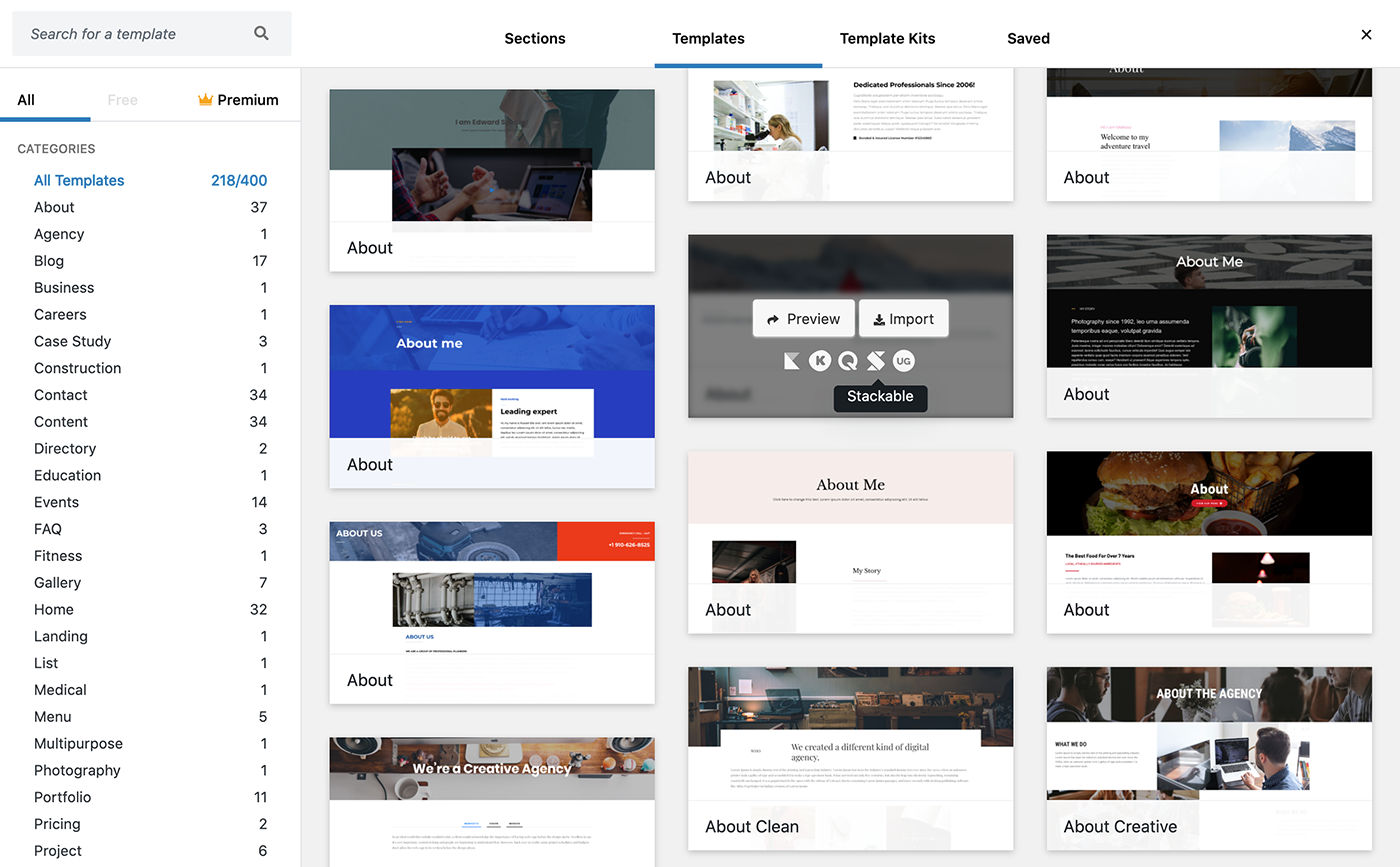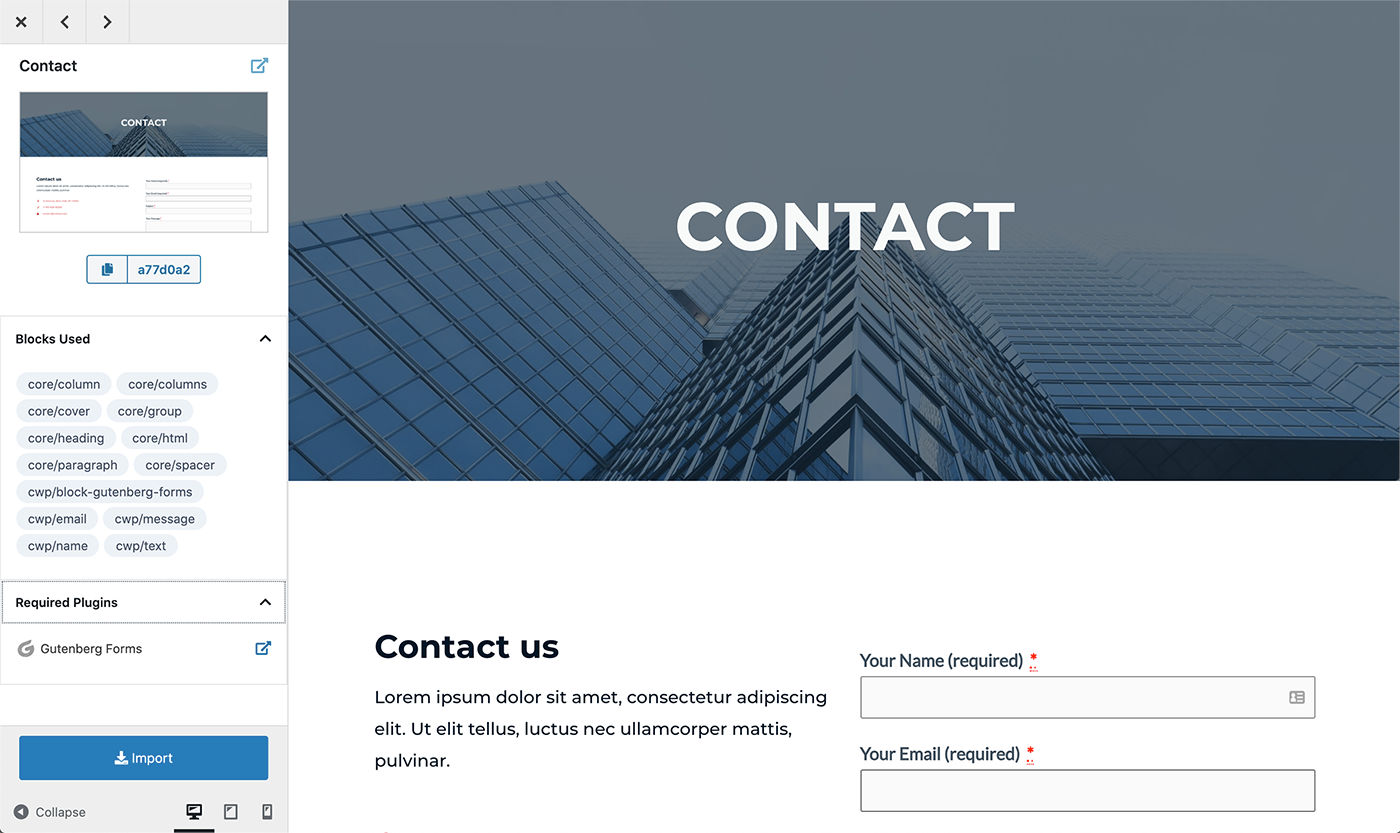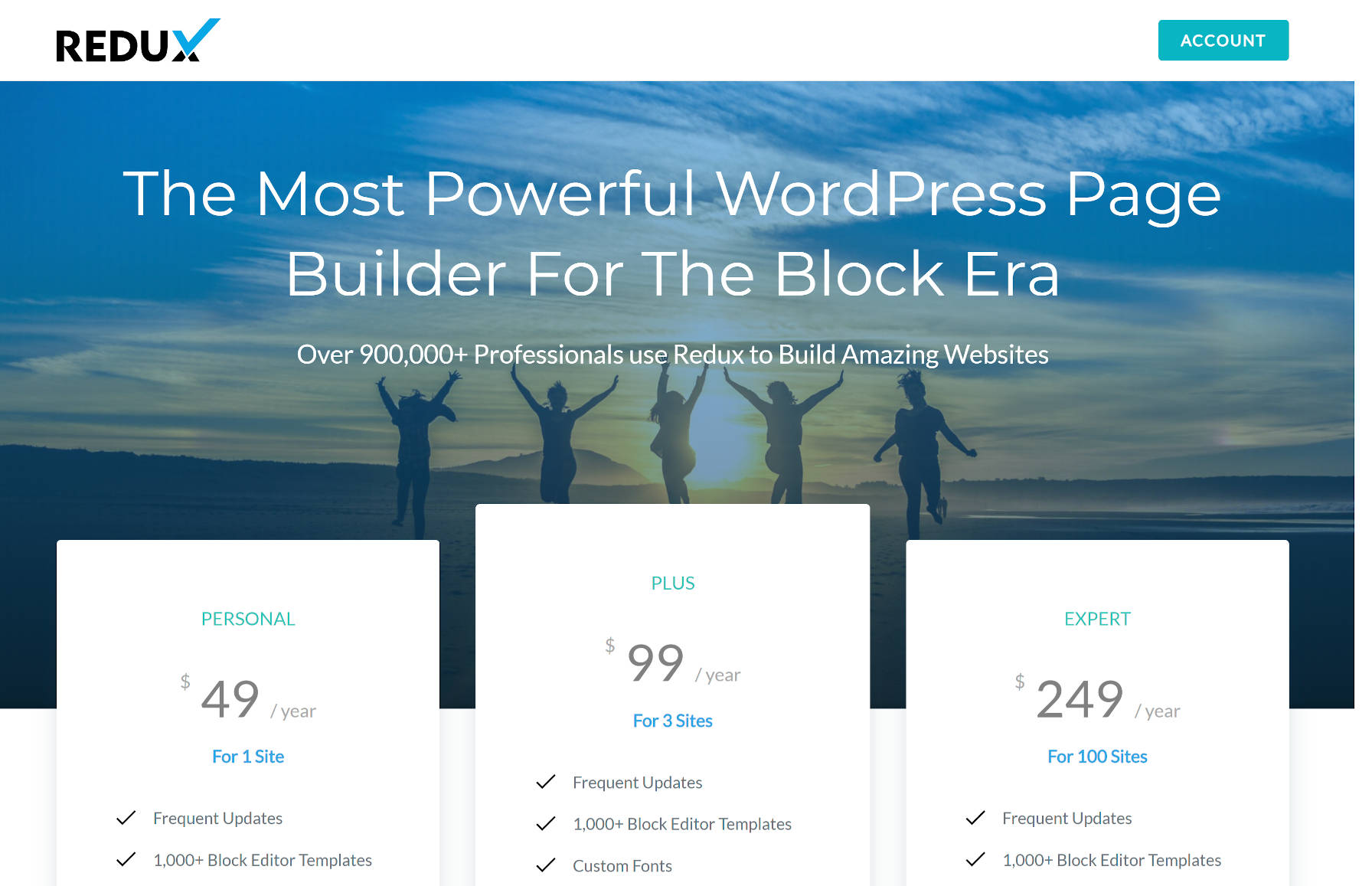Dōvy Paukstys was rushing out another update with bug fixes yesterday morning as we chatted about the future of his popular Redux Framework. It was not the first update of the day. The Virginia-based developer is just over a week into what he has called the soft launch of Redux 4.x. It is a major reconstruction of a plugin that has been powering over 900,000 websites and has a strong developer audience.
The changes over the past week might seem risky to some. He has built a massive user base by providing one of the most powerful theme and plugin options frameworks in WordPress history. The plugin’s new focus leans heavily toward the block editor, which is still one of the most controversial features of WordPress, even after nearly two years as part of the core platform.
Paukstys needed to make a change. The developer-only approach was not generating the return on investment that he needed. The $7,000 in donations and subscriptions received in 2019 was not sustainable, especially when products on the Envato marketplace had generated at least $56 million on the back of Redux, according to data he had gathered. He was leaving far too much money on the table. Redux was a successful product on the surface, but developers were either unwilling to pony up the cash or the business plan was not working. It was time for something new.
It was not merely time for a change because the business was essentially going nowhere. The game was and is still changing. Theme options, the bread and butter of Redux, will likely be a thing of the past in the next year or two. Themes will become far less reliant on options panels. Developers will need to build their offerings around the block system and plugins like Redux need to keep up.
The writing was on the wall. The best time to profit from a theme options framework was the past decade. Whether it is the block editor or a page-building plugin like Elementor, design options are on the individual page level now, or at least not buckled into old-school concepts like theme options panels or the customizer.
The times they are a-changin’, and Redux is changing with them.
Paukstys is no stranger to moving with the flow. It has allowed his framework’s user numbers to continue growing over the years. In 2015, he shifted gears and focused on making sure his framework supported the customizer. This came after a controversial decision from the Themes Team to require the use of the customizer instead of custom theme options screens. Paukstys was a vocal opponent of the decision and still believes the customizer never panned out. In hindsight, he may have been right; the customizer has felt like an abandoned project over the past couple of years. Still, he made the necessary moves to keep his options framework relevant when necessary.
Today, he is propelling Redux into a new era in which blocks reign supreme.
“If Redux didn’t go into the world of blocks it would eventually be a thing of yesterday,” he said. “The future is blocks and that’s where we are putting our focus. We’re excited to once again be on the cutting edge and we hope our product can really help users, freelancers, and agencies build and improve their sites in ways they never have before.”
What he and the Redux team has done is tack an entirely new set of user-focused features onto what was once a developer platform. Even the marketing has changed. Redux is now in the business of providing and upselling features to end-users. It is no longer taking a backseat to the theme and plugin authors who have profited in the millions upon its developer API. The team is taking the steering wheel and driving toward its own future.
What Does the New Redux Do?

Redux still does all the things it has always done. Developers can build custom settings screens and offer whatever options they want to their own end-users. The most glaring addition is the new Redux Templates feature, which directly integrates with the block editor.
“Redux Templates acts as a block discovery library if you will,” said Paukstys. “We bring all templates provided by third-party plugins into a single library. You can essentially see and preview what’s possible, click, and import.”
Redux also has a built-in block dependency installer. When importing third-party templates or blocks, it will check if the plugin is installed and active. If not, it will take care of that for users.
The end goal is to ease the trouble of finding advanced block templates. Currently, most of the block templating plugins are dispersed, projects wondering around the wild. Users cannot find what they need if they do not know where to look. Redux changes all of that. Currently, it supports 18 different block plugins. It serves to give more exposure to existing block plugins and helps users discover solutions they might not have otherwise found.
On the post-editing screen, the plugin adds a new “Templates” button to the top toolbar. Once clicked, it opens a popup with its library of sections, templates, and template kits.

One of the nicer features of the plugin is its previewer. By clicking the preview button, users can see what a section or template looks like before importing anything. On the left side of the previewer, the plugin displays tabs that show what blocks are used and what required plugins would need to be installed and activated.
Redux leaves little to the imagination. Any necessary information about what is being installed is directly available. Plus, it provides links to any plugins that might be installed.

The great thing is that the Templates feature does not lock the user down to the Redux plugin. If a user wants to deactivate Redux in the future, nothing will change with their blocks. It is primarily serving as a bridge between end-users and the massive world of block projects.
“We see the future of options being diminished in the long run by blocks, so we found a way to move into that space to keep Redux always on the cutting edge,” said Paukstys. His team completely rewrote the underlying framework and brought everything up to the WordPress coding standards.
The move to support blocks is more of a repositioning of a project whose days were numbered.
Paukstys stressed that Redux has every feature that it had before and even more. The team added CSS variables for developers if they prefer using them over a compiler. He feels like the core framework has improved drastically, which means old users can continue enjoying the features they have become accustomed to.
A New Business Plan

Make no mistake. Paukstys is looking to grow the revenue of his business and create a sustainable future for Redux. The pricing plan is clear and follows a model that has been successful for many commercial plugins over the years. The plans are tiered and range from $49 per year to $249, depending on the number sites the user wants automatic updates and support for.
The commercial plans offer new features for developers like automated Google Font updates, custom fonts integrated into all panels, unlimited widget areas, and dynamic search.
However, the big upsell is landing directly on the doorstep of end-users. Each of the commercial plans offers full access to over 1,000 sections and full-page templates. The breadth of options can almost be overwhelming, but the average user will be able to find nearly any type of template needed for their site. From restaurants to corporate offices to fitness studios, there is a little something for everyone.
“I was all too altruistic,” said Paukstys of the previous years. “I believed that if I helped people make money, they’d give back. Unfortunately, that is not how it works. I’ve worked for years with various pricing models, each doomed to fail.” He had seen others rise to business success, quite often on the work that he had put in. It is not all about money, and he believes he has something of value to offer in return.
Development skill is not enough to breed financial success. Sound financial principles must back it up.
One of the catalysts for recent changes to his business plan was joining Post Status, which has a strong community of business leaders in the WordPress ecosystem. He credits Alex Denning, Kimberly Lipari, Haris Zulfiqar, Rich Tabor, and others as inspiration, helping him to shift his thinking around the business side of the project.
Some of the lessons he has learned thus far are:
- Developers are already starved. Focus on users.
- Add-ons can be a bad model. A single pro/premium product is much easier to sell and manage.
- The need for a revenue model. Don’t expect people to just hand over money.
- Use the audience you have. Don’t cannibalize yourself.
“Where we’ve ended up is a much cheaper plan for developers and a powerful toolkit for users,” he said. “Hopefully, we’re pushing Gutenberg into a greater place of value.”
Moving Forward
Naturally, not every user will be happy with the overhaul of the plugin. For years, Redux was geared specifically toward developers. It was an options framework.
“Redux was for a completely different purpose which is for developers to create Options framework,” wrote a user named James in a review. “They have changed the plugin suddenly to a page builder something like that. It doesn’t make sense and they are using the previous plugin’s reputation.”
It is a fair criticism. And, it was expected. The plugin has switched much of its focus to end-users. However, it has not removed the existing API and features that made it successful with developers in the past.
Paukstys is clear that he is building on top of the reputation that Redux has earned and launching new features for end-users. He is unapologetic about trying something new to bring in a reasonable return on his years-long investment of time and resources. Launching a completely new and separate project would carry far more risk. It makes sense to build atop the mountain he had already built.
It won’t make everyone happy. However, he said that the feedback has been “shockingly positive” in the week since the Redux 4 soft launch.
“I’ve never realized how much users appreciated Redux,” he said. “Some of the changes to the framework broke sites, and everyone I have reached out to help has been so extremely gracious. It’s so refreshing and honestly helps me to see why the WordPress community is such a great place to be. I fear developers are too harsh to one another. Users on the other hand, if provided kind support, are in turn incredibly kind.”
If most of the feedback thus far is any indication of the plugin’s future, do not expect to see pitchforks and torches.
He might have to take a few lumps with a few disgruntled users over the change. It comes with the territory. However, feedback will likely directly correlate with how well he serves users through the Redux support channels.
The project will also benefit from a potentially new user base in the coming months and years. The plugin is dipping its toes into a new market while maintaining the features that got it to where it is today. It will be a bit of a balancing act, but the plugin must move with the times.
The Future of Redux
This is a new era for Redux. In the immediate future, Paukstys and team will need to focus on ironing out all of the bugs and the transition to a new market. It is a time for reflection, careful listening, and attentiveness before diving headlong into new features.
“In the past, we were 100% developer-centric,” said Paukstys. “That being said, we always had our eye on the user and wanted to fulfill their needs. Now we’re expanding to support the users directly, as well as developers.”
With the newfound focus on end-users, there is potential for growth in other areas. Paukstys says the focus is 100% on the block editor at present. Branching out to support other major page builders like Elementor is not out of the question. However, Redux should be able to continue finding success by extending the core experience.
“When we started this adventure into the blocks space, we worried, given the limited number of blocks out there,” he said. “But honestly, there’s some amazing innovation out there, and it’s been pretty great what we can build with Gutenberg.”
I saw this today while trying to install one of the plugins. They use names of all other Block Collection plugins in their description, which makes sure they appear in search if you search for any of those plugins. Some of them don’t even have any templates when I tried, just names for the sake of it.
I was excited to see this initially but that kind of spamming (I hope I’m wrong) spoiled my excitement.